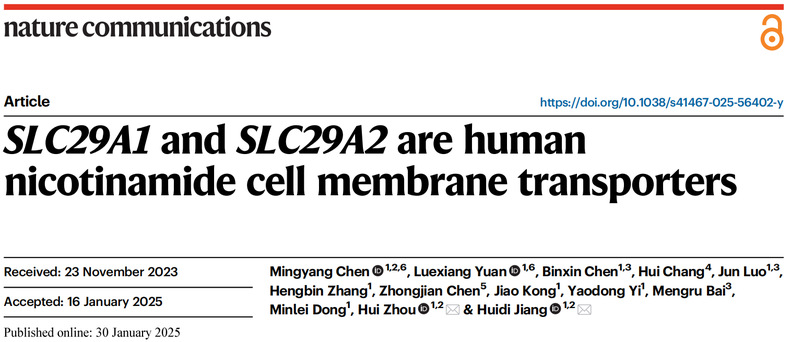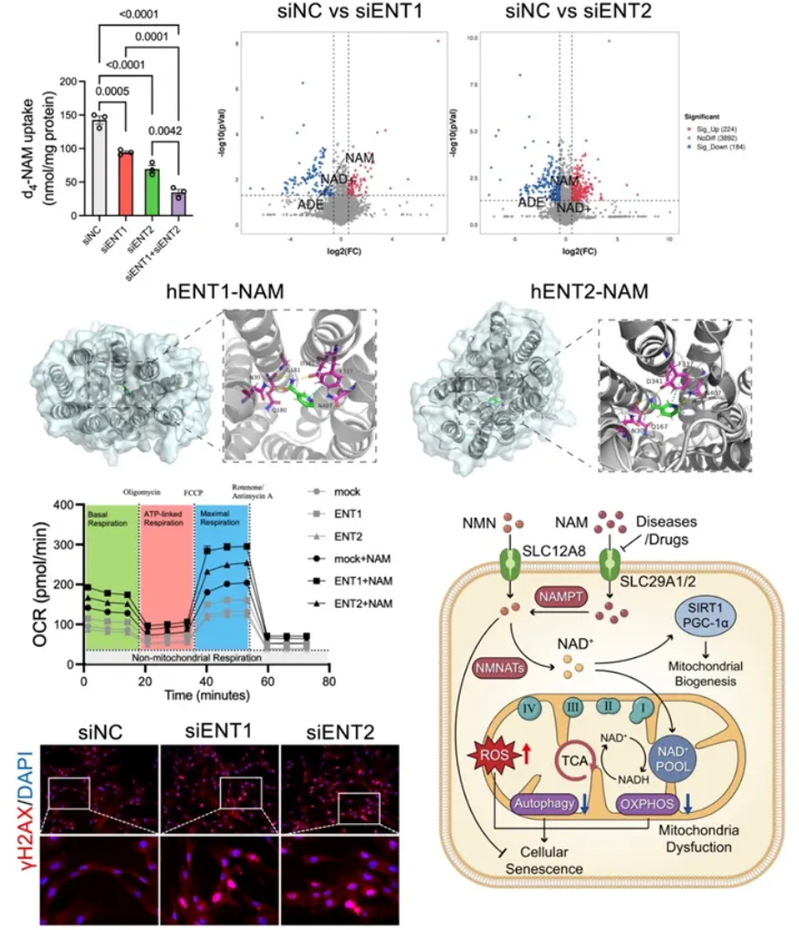Nature Communications by the team of College of Pharmaceutical Sciences, Zhejiang University reported the mechanism of SLC29A1 and SLC29A2 mediated nicotinamide transport across cell membranes
2025-02-07 | 药学院英文网
Nicotinamide, the main form of vitamin B3, is widely used in nutraceuticals, dietary supplements and cosmetics for its metabolic regulation, cellular protection and repair, and especially for its anti-aging effects. Nicotinamide acts by being converted to nicotinamide adenine dinucleotide (NAD+) within the cell. Because nicotinamide is highly water-soluble, it is difficult to cross the cell membrane phospholipid bilayer by simple diffusion, so its entry into the cell needs to be assisted by a transporter, but the transporter that mediates nicotinamide transport across the cell membrane has not yet been elucidated.

On 30 January 2025, Professor Huidi Jiang's team at College of Pharmaceutical Sciences, Zhejiang University, published their research results entitled "SLC29A1 and SLC29A2 are human nicotinamide cell membrane transporters" in Nature Communications. The article describes the mechanism of nicotinamide transcellular membrane transport mediated by the balanced nucleoside transporters ENT1 and ENT2 encoded by SLC29A1 and SLC29A2 genes. The research team applied inhibitor, specific knockdown, overexpression, molecular docking and point mutation techniques to clarify the contribution of SLC29A1 and SLC29A2 to nicotinamide transcellular membrane transport, and with the help of metabolomics and liquid-plasmid coupling to further clarify the regulatory roles of SLC29A1 and SLC29A2 on nicotinamide metabolism as well as intracellular levels of nicotinamide and NAD+; with the help of transcriptional With the help of transcriptomics, the regulation of nicotinamide biochemical function by SLC29A1 and SLC29A2 was revealed, and the regulation of cellular energy metabolism and cellular senescence through the transport of nicotinamide by SLC29A1 and SLC29A2 was verified.

Figure 1. SLC29A1/2 (ENT1/2) mediates nicotinamide (NAM) transport across cell membranes and regulates its biochemical function.
The College of Pharmaceutical Sciences of Zhejiang University was the first author unit of the paper; PhD student Mingyang Chen and postgraduate student Liaoxiang Yuan were the co-first authors, and Prof Huidi Jiang and Associate Professor Hui Zhou were the co-corresponding authors.
Original link: https://www.nature.com/articles/s41467-025-56402-y
NEWS
-
10
2025.12
-
27
2025.11
-
25
2025.11
-
03
2025.11
-
30
2025.10
-
29
2025.10
